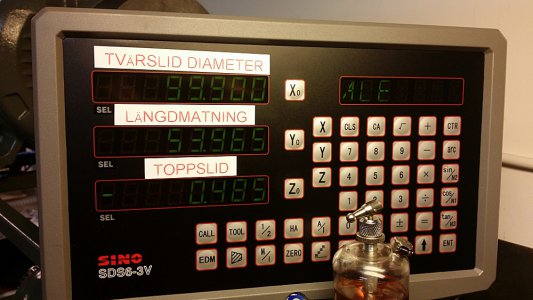Other kind of atomic! They use a Caesium vapour and pump it with the atoms' ionisation energy/frequency, which is re-emitted when it returns to neutral - it's incredibly stable and a single frequency which is then counted down to once-a-second.
The Best Clocks in use are accurate to about a second in 158 million years, the next generation are getting difficult to measure, as they're in the one second in the lifetime-of-the-universe bracket...
I just distribute the time from 'em, accurate to a ten-millionth of a second everywhere it reaches, the easy bit.
Dave H. (the other one)
Dave, that is absolutely fascinating! And here I thought that working to .0001'' was accurate (or precise?).
Mike




 I may not even follow the rules but it is how I want it.
I may not even follow the rules but it is how I want it.
